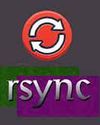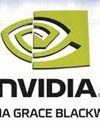
Large language models (LLMs) have emerged as a cornerstone in AI evolution. These sophisticated AI models, which process and generate human-like text, are not just technological marvels; they are shaping the future of communication, content creation, and even coding.
As organisations and individuals navigate this new landscape, one critical decision stands out - choosing between proprietary and open-source LLMs. Let's delve into the compelling reasons to consider open-source LLMs, underscoring the potential risks of overlooking them.
Understanding open-source LLMs
Before delving into the intricacies of open-source LLMs, it's essential to understand their foundation. LLMs are a subset of what's known as foundation models. These are expansive AI models trained on vast amounts of diverse, unlabelled data in a self-supervised manner. The large' in LLMs isn't just hyperbole-it reflects the immense scale of data they're trained on, often reaching petabytes, which translates into a staggering quantity of words and information.
At the heart of LLMs are three core components.
Data: This is the raw material of LLMs the vast, unstructured textual data they're trained on. While a gigabyte of text data might contain roughly 125 million words, LLMs go much further, being trained on exponentially larger datasets.
Architecture: This refers to the underlying structure of the model. For instance, GPT-3.5 utilises a transformer architecture, which is particularly adept at handling the complexities of natural language due to its ability to process sequences of data and capture contextual relationships within text.
この記事は Open Source For You の March 2024 版に掲載されています。
7 日間の Magzter GOLD 無料トライアルを開始して、何千もの厳選されたプレミアム ストーリー、9,000 以上の雑誌や新聞にアクセスしてください。
すでに購読者です ? サインイン
この記事は Open Source For You の March 2024 版に掲載されています。
7 日間の Magzter GOLD 無料トライアルを開始して、何千もの厳選されたプレミアム ストーリー、9,000 以上の雑誌や新聞にアクセスしてください。
すでに購読者です? サインイン

Red Hat unveils Red Hat OpenShift Virtualization Engine
Red Hat OpenShift Virtualization Engine is a new edition of Red Hat OpenShift that offers a dedicated solution for organisations to leverage the virtualisation capabilities already available within Red Hat OpenShift.

Spring AI: A Door to GenAI Heaven for Java Developers
Let's explore the Spring AI framework and its advantages, and look at how it is helping Java developers adopt AI.

Significant security vulnerabilities drive the release of Rsync 3.4
Rsync, the widely used utility for incremental file transfers and synchronisation, has released version 3.4. This update isn't packed with exciting new features but is instead critical due to several newly disclosed security vulnerabilities.

NVIDIA puts Grace Blackwell at every AI developer's fingertips
NVIDIA has introduced NVIDIA Project DIGITS, a groundbreaking personal AI supercomputer designed to empower AI researchers, data scientists, and students NVIDIA® NVIDIA GRACE BLACKWELL with the immense capabilities of the NVIDIA Grace Blackwell platform.

Top Tools for DevOps, Cybersecurity, and Cloud Management in 2025
In 2025, organisations will continue to rely on open source tools to retain a competitive edge. We look at why the best tools for DevOps, cybersecurity and cloud management will remain relevant and how best to integrate them into your organisation.

CREW: Open source platform to improve human-AI interaction
As human-AI collaboration deepens, critical questions arise: How should humans and AI complement one another? What kind of feedback enhances AI training? How can trust in AI be optimised to balance collaboration without over-reliance? Researchers at Duke University are addressing these challenges through CREW-an innovative platform designed to advance human-AI teaming.

Red Hat completes the acquisition of Neural Magic
Red Hat, Inc., has announced the completion of its acquisition of Neural Magic, a trailblazer in software and algorithms that accelerate generative AI (GenAI) inference workloads.

The Do's and Don'ts for Software Architects
Here's a list of best practices for software architects as well as the common mistakes they should try not to fall prey to.

openSUSE's Tumbleweed introduces Wayland support for the LXQt desktop environment
The openSUSE Project has announced that its Tumbleweed rolling release distribution now includes Wayland support for users of the LXQt desktop environment.

A Guide for Software Architects: Common Mistakes and Best Practices
Software architects play an invaluable role in the digital transformation of an organisation. To make a mark, they must imbibe certain qualities and avoid common errors.